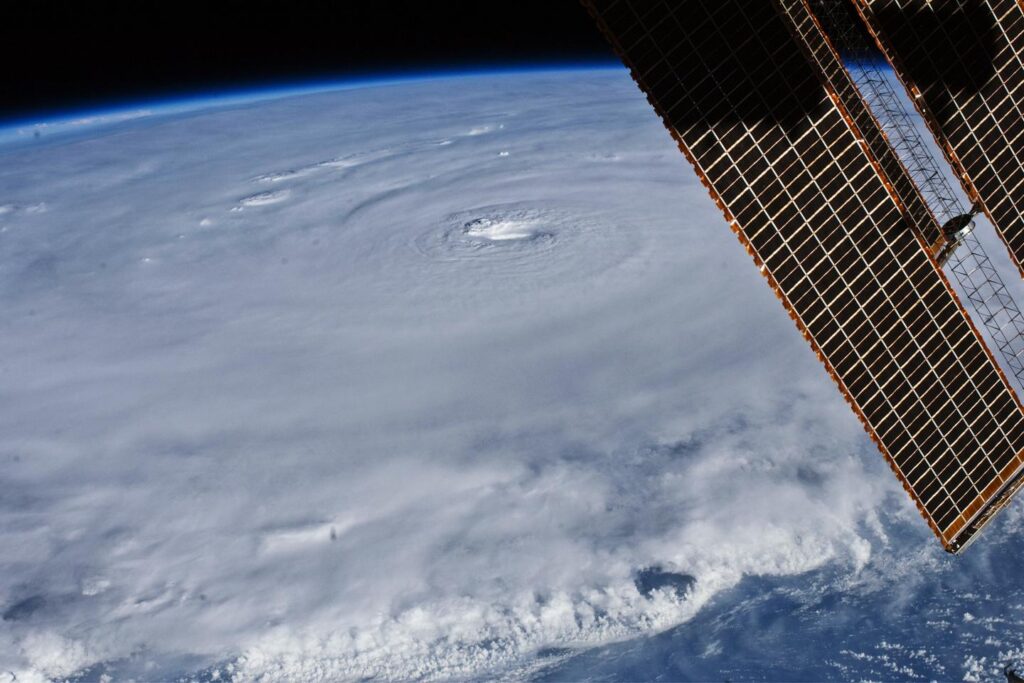What is Hurricane and how They Created, which country facing most of the Hurricane in History, What is the most powerful Hurricane in History, and in which country?

Everyone knows about the Hurricane because this is part of the syllabus of every student’s life. But is anyone knows What is Hurricane and how They Created it? What is the main reason for the Hurricane creation, Which country mostly affected by this kind of natural disaster?
A hurricane is a type of storm called a tropical cyclone, which forms over tropical or subtropical waters. When a storm’s maximum sustained winds reach 74 mph, it is called a hurricane.
In other words, a tropical cyclone is a rapidly rotating storm system characterized by a low-pressure center, a closed low-level atmospheric circulation, strong winds, and a spiral arrangement of thunderstorms that produce heavy rain and squalls.
It is called with different names in different locations. It is called a typhoon, tropical storm, cyclonic storm, tropical depressions, etc.
The Hurricane that occurs in the Atlantic Ocean and northeastern Pacific Ocean, in the south pacific or Indian Ocean.
Every year tropical cyclones impact various regions of the globe including the gulf coast of North America, Australia, India, and Bangladesh. Tropical Cyclones are typically between 100 to 2000 km in diameter.
The primary energy source for these storms is warm ocean waters. These storms are therefore typically strongest when over or near water, and weaken quite rapidly over land. This causes coastal regions to be particularly vulnerable to tropical cyclones, compared to inland regions.
History of the Tropical Cyclone | History of the Hurricane
A tropical cyclone is a generic term for a warm-core, non-frontal synoptic-scalelow-pressure system over tropical or subtropical waters around the world. The systems generally have a well-defined center which is surrounded by deep atmospheric convection and a closed wind circulation at the surface.
Historically tropical cyclones have occurred around the world for thousands of years, with one of the earliest tropical cyclones on record estimated to have occurred in Western Australia in around 6000 BC. However, before satellite imagery became available during the 20th century, many of these systems went undetected unless it impacted land or a ship encountered it by chance.
How to create Tropical Cyclones | Structure of the Hurricane | Structure of the Tropical Cyclones

Tropical cyclones on either side of the Equator generally have their origins in the Intertropical Convergence Zone, where winds blow from either the northeast or southeast. Within this broad area of low-pressure air is heated over the warm tropical ocean and rises in discrete parcels which causes thundery showers to form.
These showers dissipate quite quickly, however, they can group together into large clusters of thunderstorms. This creates a flow of warm, moist, rapidly rising air, which starts to rotate cyclonically as it interacts with the rotation of the earth. There are several factors required for these thunderstorms to develop further, including sea surface temperatures of around 27 °C (81 °F) and low vertical windshear surrounding the system.
Interaction with the upper ocean
The passage of a tropical cyclone over the ocean causes the upper layers of the ocean to cool substantially, which can influence subsequent cyclone development. This cooling is primarily caused by wind-driven mixing of cold water from deeper in the ocean with the warm surface waters.
This effect results in a negative feedback process that can inhibit further development or lead to weakening. Additional cooling may come in the form of cold water from falling raindrops (this is because the atmosphere is cooler at higher altitudes).
Cloud cover may also play a role in cooling the ocean, by shielding the ocean surface from direct sunlight before and slightly after the storm passage. All these effects can combine to produce a dramatic drop in sea surface temperature over a large area in just a few days.
What is the Environmental Steering due to Hurricane | What is the Environmental Changes due to Hurricane
Environmental steering is the primary influence on the motion of tropical cyclones. It represents the movement of the storm due to prevailing winds and other wider environmental conditions, similar to “leaves carried along by a stream”.
the winds, or flow field, in the vicinity of a tropical cyclone may be treated as having two parts: the flow associated with the storm itself, and the large-scale background flow of the environment.
Climatologically, tropical cyclones are steered primarily westward by the east-to-west trade winds on the equatorial side of the subtropical ridge—a persistent high-pressure area over the world’s subtropical oceans.
In the tropical North Atlantic and Northeast Pacific oceans, the trade winds steer tropical easterly waves westward from the African coast toward the Caribbean Sea, North America, and ultimately into the central Pacific Ocean before the waves dampen out. These waves are the precursors to many tropical cyclones within this region.
Expected Size of the Hurricane | Expected Size of the Tropical Cyclone | What is Hurricane and how They Created
Size descriptions of tropical cyclones
| ROCI (Diameter) | Type |
|---|---|
| Less than 2 degrees latitude | Very small/minor |
| 2 to 3 degrees of latitude | Small |
| 3 to 6 degrees of latitude | Medium/Average/Normal |
| 6 to 8 degrees of latitude | Large |
| Over 8 degrees of latitude | Very large |
On Earth, tropical cyclones span a large range of sizes, from 100–2,000 kilometers (62–1,243 mi) as measured by the radius of vanishing wind. They are largest on average in the northwest Pacific Ocean basin and smallest in the northeastern Pacific Ocean basin.
If the radius of the outermost closed isobar is less than two degrees of latitude (222 km (138 mi)), then the cyclone is “very small” or a “midget”. A radius of 3–6 latitude degrees (333–670 km (207–416 mi)) is considered “average-sized”. “Very large” tropical cyclones have a radius of greater than 8 degrees (888 km (552 mi)).
Tropical cyclone basins and official warning centers for What is Hurricane and how They Created
| Basin | Warning center | Area of responsibility |
|---|---|---|
| North Atlantic | United States National Hurricane Center | Equator northward, African Coast – 140°W |
| Eastern Pacific | United States Central Pacific Hurricane Center | Equator northward, 140–180°W |
| Western Pacific | Japan Meteorological Agency | Equator – 60°N, 180–100°E |
| North Indian Ocean | India Meteorological Department | Equator northwards, 100–40°E |
| South-West Indian Ocean | Météo-France Reunion | Equator – 40°S, African Coast – 90°E |
| Australian region | Indonesian Meteorology, Climatology, and Geophysical Agency (BMKG) | Equator – 10°S, 90–141°E |
| Papua New Guinea National Weather Service | Equator – 10°S, 141–160°E | |
| Australian Bureau of Meteorology | 10–40°S, 90–160°E | |
| Southern Pacific | Fiji Meteorological Service | Equator – 25°S, 160°E – 120°W |
| Meteorological Service of New Zealand | 25–40°S, 160°E – 120°W |
Preparrations for Tropical Cyclone and Hurricane 2021
Ahead of the formal season starting, people are urged to prepare for the effects of a tropical cyclone by politicians and weather forecasters amongst others. They prepare by determining their risk to the different types of weather, tropical cyclones cause, checking their insurance coverage and emergency supplies, as well as determining where to evacuate to if needed.
When a tropical cyclone develops and is forecast to impact land each member nation of the World Meteorological Organization issues various watches and warnings to cover the expected impacts. However, there are some exceptions with the United States National Hurricane Center and Fiji Meteorological Service responsible for issuing or recommending warnings for other nations in their area of responsibility.
Season lengths and averages for Hurricane expectation
| Basin | Season start | Season end | Tropical cyclones |
|---|---|---|---|
| North Atlantic | June 1 | November 30 | 14.4 |
| Eastern Pacific | May 15 | November 30 | 16.6 |
| Western Pacific | January 1 | December 31 | 26.0 |
| North Indian | January 1 | December 31 | 12 |
| South-West Indian | July 1 | June 30 | 9.3 |
| Australian region | November 1 | April 30 | 11.0 |
| Southern Pacific | November 1 | April 30 | 7.1 |
History of the Disasters Cyclone, Hurricane | What is Hurricane and how They Created
- The 1970 Bhola cyclone is considered to be the deadliest tropical cyclone on record, which killed around 300,000 people, after striking the densely populated Ganges Delta region of Bangladesh on November 13, 1970. Its powerful storm surge was responsible for the high death toll.
- Elsewhere, Typhoon Nina killed nearly 100,000 in China in 1975 due to a 100-year flood that caused 62 dams including the Banqiao Dam to fail.
- The Great Hurricane of 1780 is the deadliest North Atlantic hurricane on record, killing about 22,000 people in the Lesser Antilles. A tropical cyclone does not need to be particularly strong to cause memorable damage, primarily if the deaths are from rainfall or mudslides.
- Tropical Storm Thelma in November 1991 killed thousands in the Philippines, although the strongest typhoon to ever make landfall on record was Typhoon Haiyan in November 2013, causing widespread devastation in Eastern Visayas, and killing at least 6,300 people in the Philippines alone. In 1982, the unnamed tropical depression that eventually became Hurricane Paul killed around 1,000 people in Central America.
- Hurricane Harvey and Hurricane Katrina are estimated to be the costliest tropical cyclones to impact the United States mainland, each causing damage estimated at $125 billion. Harvey killed at least 90 people in August 2017 after making landfall in Texas as a low-end Category 4 hurricane.
- Hurricane Katrina is estimated as the second-costliest tropical cyclone worldwide, causing $81.2 billion in property damage (2008 USD) alone, with overall damage estimates exceeding $100 billion (2005 USD). Katrina killed at least 1,836 people after striking Louisiana and Mississippi as a major hurricane in August 2005.
- Hurricane Maria is the third most destructive tropical cyclone in U.S. history, with damage totaling $91.61 billion (2017 USD), and with damage costs at $68.7 billion (2012 USD), Hurricane Sandy is the fourth most destructive tropical cyclone in U.S history. The Galveston Hurricane of 1900 is the deadliest natural disaster in the United States, killing an estimated 6,000 to 12,000 people in Galveston, Texas.
- Hurricane Mitch caused more than 10,000 fatalities in Central America, making it the second deadliest Atlantic hurricane in history. Hurricane Iniki in 1992 was the most powerful storm to strike Hawaii in recorded history, hitting Kauai as a Category 4 hurricane, killing six people, and causing the U.S. $3 billion in damage.
The History of the Hurricane is too large. This Natural disaster killed so many peoples in history. Now the season of the Hurricane is Started in all countries. Is all countries are prepared for these kinds of disaster.
